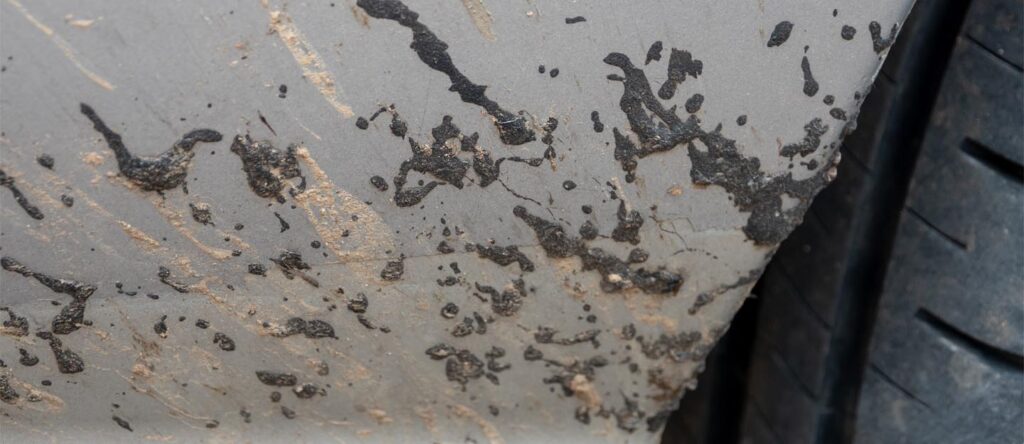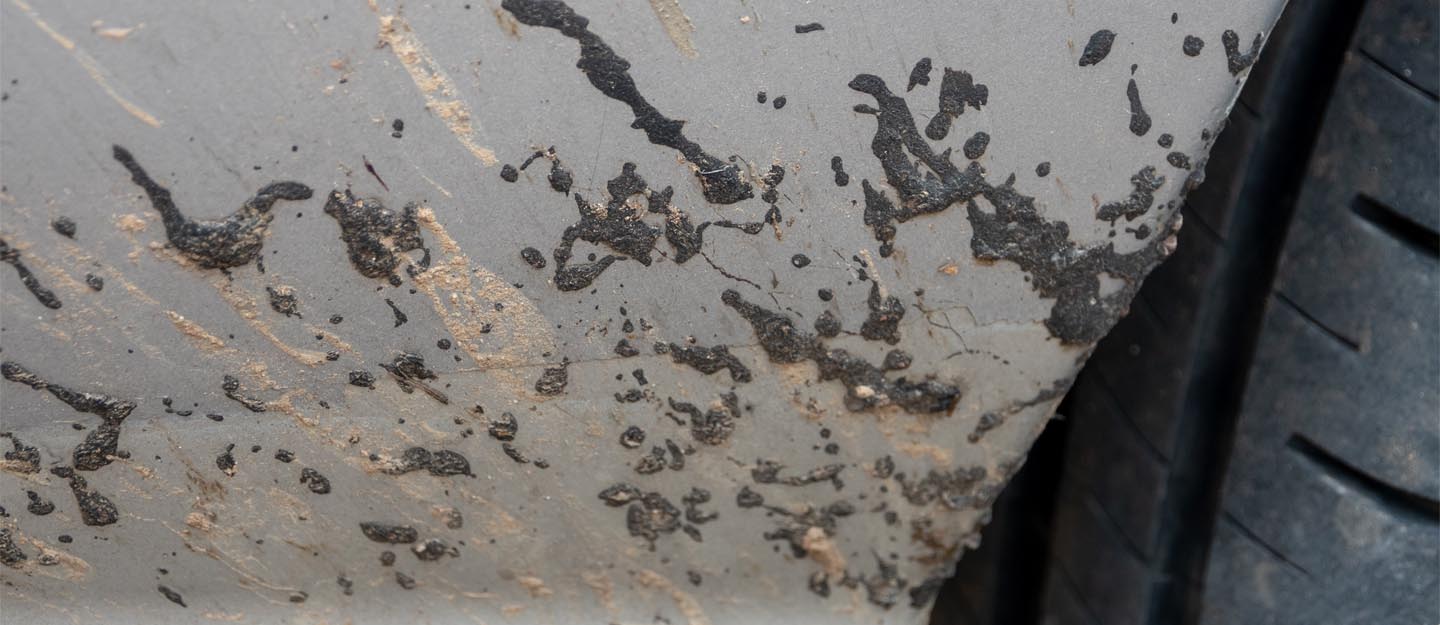
How to Take Off Tar From a Car: A Comprehensive Guide
Discovering tar on your car’s paintwork can be frustrating. These stubborn black spots not only detract from your vehicle’s appearance but can also damage the paint if left untreated. Knowing how to take off tar from a car effectively and safely is crucial for maintaining your car’s pristine condition. This comprehensive guide provides step-by-step instructions, along with essential tips and precautions, to help you remove tar without causing further damage.
Understanding Tar and Its Impact on Your Car
Tar is a viscous material derived from coal or wood, often encountered on roads and construction sites. When driving, especially on freshly paved roads or during hot weather, tar can easily splash onto your car’s lower panels, wheels, and bumpers. The sticky nature of tar allows it to adhere strongly to the car’s surface, making it difficult to remove with ordinary washing methods. Furthermore, tar contains chemicals that can react with your car’s paint, leading to discoloration, etching, and even corrosion over time. Therefore, prompt and proper removal is essential to protect your vehicle’s finish.
Essential Tools and Materials
Before you begin the process of removing tar, gather the necessary tools and materials. Having everything at hand will streamline the process and minimize the risk of damaging your car’s paint. Here’s a list of essential items:
- Tar Remover: Choose a high-quality tar remover specifically designed for automotive use. These products contain solvents that dissolve tar without harming the paint.
- Microfiber Towels: Soft, lint-free microfiber towels are essential for wiping away the tar remover and loosened tar. Avoid using abrasive cloths that can scratch the paint.
- Spray Bottle: A spray bottle is useful for applying the tar remover evenly onto the affected areas.
- Wash Mitt: A clean wash mitt will be needed to wash the car after the tar removal process.
- Car Wash Soap: Use a pH-neutral car wash soap to safely clean your car without damaging the paint.
- Water Hose: A water hose with adjustable nozzle is required for rinsing the car thoroughly.
- Detailing Clay (Optional): For stubborn tar residue, detailing clay can be used to gently lift the remaining contaminants.
- Wax or Sealant (Optional): After removing the tar and washing the car, applying a layer of wax or sealant will protect the paint and enhance its shine.
Step-by-Step Guide: How to Take Off Tar From a Car
Step 1: Preparation and Safety Precautions
Before you start, park your car in a shaded area to prevent the tar remover from drying too quickly. Read the instructions on your chosen tar remover and wear gloves and eye protection to avoid skin and eye irritation. Ensure proper ventilation in your working area.
Step 2: Pre-Wash the Car
Wash your car thoroughly with car wash soap and water to remove any loose dirt and debris. This will prevent scratching the paint during the tar removal process. Rinse the car completely and dry it with a clean microfiber towel.
Step 3: Apply the Tar Remover
Shake the tar remover well and apply it directly onto the tar spots using a spray bottle or by applying it directly onto a microfiber towel and dabbing it onto the affected areas. Allow the tar remover to dwell for the recommended time specified on the product label, usually a few minutes. Avoid letting the tar remover dry on the paint.
Step 4: Gently Wipe Away the Tar
Using a clean microfiber towel, gently wipe away the loosened tar. Avoid applying excessive pressure, as this can scratch the paint. If the tar is particularly stubborn, reapply the tar remover and allow it to dwell for a longer period. For persistent residue, use detailing clay to lift the remaining contaminants.
Step 5: Rinse Thoroughly
Once you have removed all the tar, rinse the car thoroughly with water to remove any remaining tar remover. Ensure that all traces of the product are washed away to prevent damage to the paint.
Step 6: Wash the Car Again
Wash the car again with car wash soap and water to ensure that any residual tar remover is completely removed. Rinse the car thoroughly and dry it with a clean microfiber towel.
Step 7: Apply Wax or Sealant (Optional)
To protect the paint and enhance its shine, apply a layer of wax or sealant to the areas where you removed the tar. This will also make it easier to remove tar in the future. Follow the instructions on the wax or sealant product for best results.
Tips for Preventing Tar Buildup
Prevention is always better than cure. Here are some tips to minimize tar buildup on your car:
- Avoid Freshly Paved Roads: Whenever possible, avoid driving on freshly paved roads or construction sites where tar is likely to be present.
- Wash Your Car Regularly: Regular washing will help remove tar before it becomes deeply embedded in the paint.
- Apply a Protective Coating: Applying a wax, sealant, or ceramic coating will create a barrier between the paint and the tar, making it easier to remove.
- Use Mud Flaps: Mud flaps can help prevent tar and other debris from splashing onto your car’s lower panels.
Choosing the Right Tar Remover
Selecting the right tar remover is crucial for effectively removing tar without damaging your car’s paint. Look for products specifically designed for automotive use and read reviews to ensure they are effective and safe. Avoid using harsh solvents or abrasive cleaners, as these can damage the paint. Consider the following factors when choosing a tar remover:
- Safety for Paint: Ensure the product is safe for use on your car’s paint, clear coat, and other surfaces.
- Effectiveness: Choose a product that is known for its effectiveness in removing tar, grease, and other stubborn contaminants.
- Ease of Use: Opt for a product that is easy to apply and remove, with clear instructions.
- User Reviews: Read reviews from other car owners to get an idea of the product’s performance and reliability.
Dealing with Stubborn Tar Residue
Sometimes, tar can be particularly stubborn and difficult to remove, even with the use of a tar remover. In these cases, consider the following techniques:
- Detailing Clay: Detailing clay is an excellent tool for gently lifting stubborn tar residue. Lubricate the area with detailing spray and gently rub the clay back and forth until the tar is removed.
- Heat Gun: In extreme cases, a heat gun can be used to soften the tar, making it easier to remove. However, use extreme caution and avoid overheating the paint, as this can cause damage.
- Professional Detailing: If you are unable to remove the tar yourself, consider seeking the assistance of a professional detailing service. They have the expertise and tools to safely and effectively remove even the most stubborn tar residue.
Potential Risks and Precautions
While removing tar from your car is a relatively straightforward process, it is essential to be aware of the potential risks and take appropriate precautions. Here are some important considerations:
- Avoid Abrasive Cleaners: Never use abrasive cleaners, scouring pads, or steel wool to remove tar, as these can scratch and damage the paint.
- Test in an Inconspicuous Area: Before applying any tar remover to the entire affected area, test it in an inconspicuous area to ensure it does not damage the paint.
- Work in a Well-Ventilated Area: Tar removers often contain strong solvents, so work in a well-ventilated area to avoid inhaling harmful fumes.
- Wear Protective Gear: Always wear gloves and eye protection when handling tar removers to avoid skin and eye irritation.
- Follow Product Instructions: Always follow the instructions on the tar remover product label for best results and to avoid damaging your car’s paint.
Conclusion
Knowing how to take off tar from a car is an essential skill for any car owner. By following the steps outlined in this guide and taking the necessary precautions, you can effectively remove tar without damaging your car’s paint. Regular maintenance and preventative measures can help minimize tar buildup and keep your car looking its best. Remember to always use high-quality products and gentle techniques to protect your vehicle’s finish. If you’re unsure or dealing with a particularly stubborn case, don’t hesitate to seek professional help. Taking care of your car’s paintwork ensures its longevity and maintains its value.
Understanding the impact of tar and taking swift action to remove it will significantly contribute to the overall maintenance and aesthetics of your vehicle. So, armed with this knowledge, go forth and keep your car looking pristine, one tar spot at a time!
[See also: Best Car Cleaning Products]
[See also: How to Detail Your Car Like a Pro]

